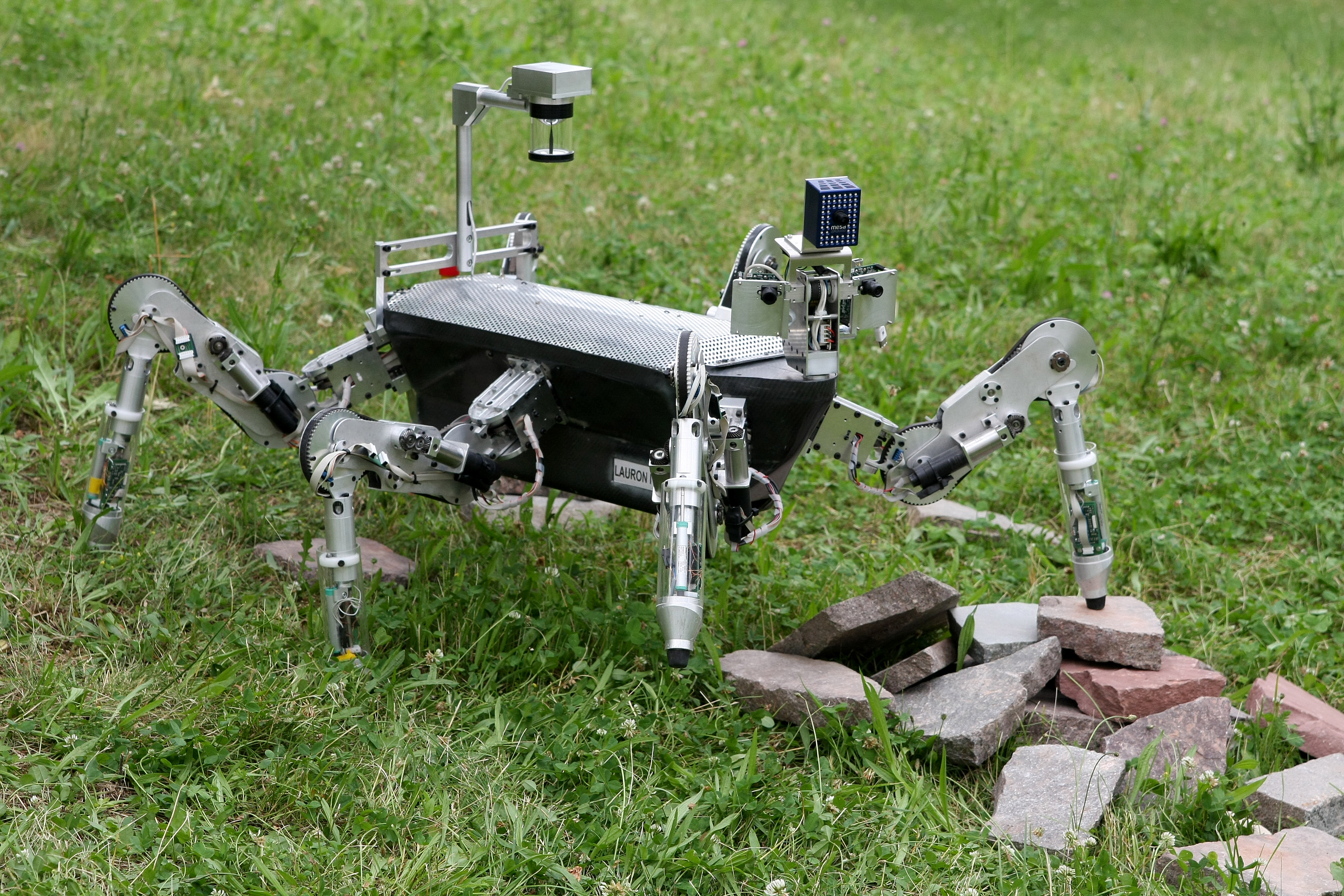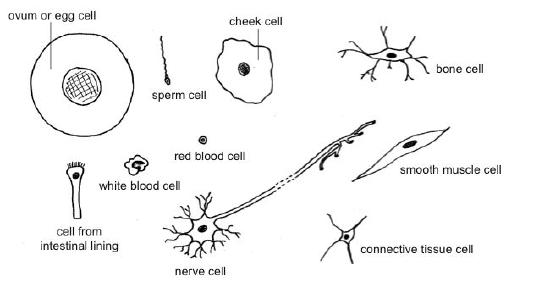10.2: Organization of the Body
- Page ID
- 16775
\( \newcommand{\vecs}[1]{\overset { \scriptstyle \rightharpoonup} {\mathbf{#1}} } \)
\( \newcommand{\vecd}[1]{\overset{-\!-\!\rightharpoonup}{\vphantom{a}\smash {#1}}} \)
\( \newcommand{\id}{\mathrm{id}}\) \( \newcommand{\Span}{\mathrm{span}}\)
( \newcommand{\kernel}{\mathrm{null}\,}\) \( \newcommand{\range}{\mathrm{range}\,}\)
\( \newcommand{\RealPart}{\mathrm{Re}}\) \( \newcommand{\ImaginaryPart}{\mathrm{Im}}\)
\( \newcommand{\Argument}{\mathrm{Arg}}\) \( \newcommand{\norm}[1]{\| #1 \|}\)
\( \newcommand{\inner}[2]{\langle #1, #2 \rangle}\)
\( \newcommand{\Span}{\mathrm{span}}\)
\( \newcommand{\id}{\mathrm{id}}\)
\( \newcommand{\Span}{\mathrm{span}}\)
\( \newcommand{\kernel}{\mathrm{null}\,}\)
\( \newcommand{\range}{\mathrm{range}\,}\)
\( \newcommand{\RealPart}{\mathrm{Re}}\)
\( \newcommand{\ImaginaryPart}{\mathrm{Im}}\)
\( \newcommand{\Argument}{\mathrm{Arg}}\)
\( \newcommand{\norm}[1]{\| #1 \|}\)
\( \newcommand{\inner}[2]{\langle #1, #2 \rangle}\)
\( \newcommand{\Span}{\mathrm{span}}\) \( \newcommand{\AA}{\unicode[.8,0]{x212B}}\)
\( \newcommand{\vectorA}[1]{\vec{#1}} % arrow\)
\( \newcommand{\vectorAt}[1]{\vec{\text{#1}}} % arrow\)
\( \newcommand{\vectorB}[1]{\overset { \scriptstyle \rightharpoonup} {\mathbf{#1}} } \)
\( \newcommand{\vectorC}[1]{\textbf{#1}} \)
\( \newcommand{\vectorD}[1]{\overrightarrow{#1}} \)
\( \newcommand{\vectorDt}[1]{\overrightarrow{\text{#1}}} \)
\( \newcommand{\vectE}[1]{\overset{-\!-\!\rightharpoonup}{\vphantom{a}\smash{\mathbf {#1}}}} \)
\( \newcommand{\vecs}[1]{\overset { \scriptstyle \rightharpoonup} {\mathbf{#1}} } \)
\( \newcommand{\vecd}[1]{\overset{-\!-\!\rightharpoonup}{\vphantom{a}\smash {#1}}} \)
\(\newcommand{\avec}{\mathbf a}\) \(\newcommand{\bvec}{\mathbf b}\) \(\newcommand{\cvec}{\mathbf c}\) \(\newcommand{\dvec}{\mathbf d}\) \(\newcommand{\dtil}{\widetilde{\mathbf d}}\) \(\newcommand{\evec}{\mathbf e}\) \(\newcommand{\fvec}{\mathbf f}\) \(\newcommand{\nvec}{\mathbf n}\) \(\newcommand{\pvec}{\mathbf p}\) \(\newcommand{\qvec}{\mathbf q}\) \(\newcommand{\svec}{\mathbf s}\) \(\newcommand{\tvec}{\mathbf t}\) \(\newcommand{\uvec}{\mathbf u}\) \(\newcommand{\vvec}{\mathbf v}\) \(\newcommand{\wvec}{\mathbf w}\) \(\newcommand{\xvec}{\mathbf x}\) \(\newcommand{\yvec}{\mathbf y}\) \(\newcommand{\zvec}{\mathbf z}\) \(\newcommand{\rvec}{\mathbf r}\) \(\newcommand{\mvec}{\mathbf m}\) \(\newcommand{\zerovec}{\mathbf 0}\) \(\newcommand{\onevec}{\mathbf 1}\) \(\newcommand{\real}{\mathbb R}\) \(\newcommand{\twovec}[2]{\left[\begin{array}{r}#1 \\ #2 \end{array}\right]}\) \(\newcommand{\ctwovec}[2]{\left[\begin{array}{c}#1 \\ #2 \end{array}\right]}\) \(\newcommand{\threevec}[3]{\left[\begin{array}{r}#1 \\ #2 \\ #3 \end{array}\right]}\) \(\newcommand{\cthreevec}[3]{\left[\begin{array}{c}#1 \\ #2 \\ #3 \end{array}\right]}\) \(\newcommand{\fourvec}[4]{\left[\begin{array}{r}#1 \\ #2 \\ #3 \\ #4 \end{array}\right]}\) \(\newcommand{\cfourvec}[4]{\left[\begin{array}{c}#1 \\ #2 \\ #3 \\ #4 \end{array}\right]}\) \(\newcommand{\fivevec}[5]{\left[\begin{array}{r}#1 \\ #2 \\ #3 \\ #4 \\ #5 \\ \end{array}\right]}\) \(\newcommand{\cfivevec}[5]{\left[\begin{array}{c}#1 \\ #2 \\ #3 \\ #4 \\ #5 \\ \end{array}\right]}\) \(\newcommand{\mattwo}[4]{\left[\begin{array}{rr}#1 \amp #2 \\ #3 \amp #4 \\ \end{array}\right]}\) \(\newcommand{\laspan}[1]{\text{Span}\{#1\}}\) \(\newcommand{\bcal}{\cal B}\) \(\newcommand{\ccal}{\cal C}\) \(\newcommand{\scal}{\cal S}\) \(\newcommand{\wcal}{\cal W}\) \(\newcommand{\ecal}{\cal E}\) \(\newcommand{\coords}[2]{\left\{#1\right\}_{#2}}\) \(\newcommand{\gray}[1]{\color{gray}{#1}}\) \(\newcommand{\lgray}[1]{\color{lightgray}{#1}}\) \(\newcommand{\rank}{\operatorname{rank}}\) \(\newcommand{\row}{\text{Row}}\) \(\newcommand{\col}{\text{Col}}\) \(\renewcommand{\row}{\text{Row}}\) \(\newcommand{\nul}{\text{Nul}}\) \(\newcommand{\var}{\text{Var}}\) \(\newcommand{\corr}{\text{corr}}\) \(\newcommand{\len}[1]{\left|#1\right|}\) \(\newcommand{\bbar}{\overline{\bvec}}\) \(\newcommand{\bhat}{\widehat{\bvec}}\) \(\newcommand{\bperp}{\bvec^\perp}\) \(\newcommand{\xhat}{\widehat{\xvec}}\) \(\newcommand{\vhat}{\widehat{\vvec}}\) \(\newcommand{\uhat}{\widehat{\uvec}}\) \(\newcommand{\what}{\widehat{\wvec}}\) \(\newcommand{\Sighat}{\widehat{\Sigma}}\) \(\newcommand{\lt}{<}\) \(\newcommand{\gt}{>}\) \(\newcommand{\amp}{&}\) \(\definecolor{fillinmathshade}{gray}{0.9}\)This six-legged robot in Figure \(\PageIndex{1}\) was created for research, but it looks like it might be fun to play with. It’s obviously a complex machine. Think about some other, more familiar machines, such as power drills, washing machines, and lawnmowers. Each machine consists of many parts, and each part does a specific job, yet all the parts work together to perform certain functions. Many people have compared the human body to a machine, albeit an extremely complex one. Like real machines, the human body also consists of many parts that work together to perform certain functions, which in the case of the human body include keeping the organism alive. The human body may be the most fantastic machine on Earth, as you will discover when you learn more about it in this concept.

What the Human Machine Can Do
Imagine a machine that has all of the following attributes. It can generate a “wind” of 166 km/hr (100 mi/hr), and it can relay messages faster than 400 km/hr (249 mi/hr). It contains a pump that moves about a million barrels of fluid over its lifetime, and it has a control center that contains billions of individual components. The machine in question can even repair itself if necessary and not wear out for up to a century or more. It has all these abilities, and yet it consists mainly of water. What is it? It is the human body.
Organization of the Human Body
The human body is a complicated, highly organized structure that consists of trillions of parts that function together to achieve all the functions needed to maintain life. The biology of the human body incorporates the body’s structure, the study of which is called anatomy, and the body’s functioning, the study of which is called physiology.
The organization of the human body can be seen as a hierarchy of increasing size and complexity, starting at the level of atoms and molecules and ending at the level of the entire organism, which is an individual living thing. You can see the intervening levels of organization in Figure \(\PageIndex{2}\) and read about them in the figure and the sections that follow.
To study the smallest level of organization, scientists consider the simplest building blocks of matter: atoms and molecules. The chemical level of organization considers these two building blocks as atoms bond to form molecules with three-dimensional structures. All matter in the universe is composed of one or more unique pure substances called elements, familiar examples of which are hydrogen, oxygen, carbon, nitrogen, calcium, and iron. The smallest unit of any of these pure substances (elements) is an atom. Atoms are made up of subatomic particles such as the proton, electron, and neutron. Two or more atoms combine to form a molecule, such as the water molecules, proteins, and sugars found in living things. Molecules are the chemical building blocks of all body structures.
The cellular level is considered when a variety of molecules combine to form the fluid and organelles of a body cell. A cell is the smallest independently functioning unit of a living organism. Even bacteria, which are extremely small, independently living organisms, have a cellular structure. Each bacterium is a single cell. All living structures of human anatomy contain cells, and almost all functions of human physiology are performed in cells or are initiated by cells. A human cell, such as a smooth muscle cell, typically consists of flexible membranes that enclose cytoplasm, a water-based cellular fluid together with a variety of tiny functioning units called organelles.

The tissue level can be studied when a community of similar cells forms a body tissue. A tissue is a group of many similar cells (though sometimes composed of a few related types) that work together to perform a specific function. For example, when many smooth muscle cells come together both structurally and functionally, these cells collectively form a layer of smooth muscle tissue.
An organ is an anatomically distinct body structure composed of two or more tissue types. Each organ performs one or more specific physiological functions. The human bladder, which is composed of smooth muscle tissue, transitional epithelial tissue, and several types of connective tissue serves the function of storing urine produced by the kidneys.
An organ system level is a group of organs that work together to perform major functions or meet the physiological needs of the body. In the organ example above, both the kidneys and the bladder are organs of the urinary system. The kidneys produce urine, which is moved to the bladder by the ureters. Urine can then leave the bladder, and the body, through the urethra. These four organs work together to rid the body of liquid waste.
Cells
The basic units of structure and function of the human body, as in all living things, are cells — an amazing 37 trillion of them by the time the average person reaches adulthood! Each cell carries out basic life processes that allow the body to survive. In addition, most human cells are specialized in structure and function to carry out other specific roles. In fact, the human body may consist of as many as 200 different types of cells, each of which has a special job to do. Just a few of these different human cell types are pictured in Figure \(\PageIndex{3}\). The cells in the figure have obvious differences in structure that reflect their different functions. For example, nerve cells have long projections sticking out from the body of the cell. These projections help them carry electrical messages to other cells.

Tissues
After the cell, the tissue is the next level of organization in the human body. A tissue is a group of connected cells that have a similar function. There are four basic types of human tissues: connective, epithelial, muscle, and nervous tissues. These four tissue types, which are shown in Figure \(\PageIndex{4}\), make up all the organs of the human body. Connective tissue is composed of cells that are suspended in a matrix. Epithelial tissue is mostly composed of cells that are tightly packed together in sheets. Muscle tissue is also composed of tightly packed cells and some types of muscle, such as the skeletal muscle shown in Figure \(\PageIndex{4}\) contains striation due to the organization of muscle fibers. Nervous tissue is composed of cells with long extensions.

Organs and Organ Systems

After tissues, organs are the next level of the organization of the human body. An organ is a structure that consists of two or more types of tissues that work together to do the same job. Examples of human organs include the heart, brain, lungs, skin, and kidneys. Human organs are organized into organ systems; the digestive system is shown in figure Figure \(\PageIndex{5}\). An organ system is a group of organs that work together to carry out a complex overall function. Each organ of the system does part of the larger job.
A Well-Oiled Machine
All of the organs and organ systems of the human body normally work together like a well-oiled machine. This is because they are closely regulated by the nervous and endocrine systems. The nervous system controls virtually all body activities, and the endocrine system secretes hormones that help to regulate these activities. Functioning together, the organ systems supply body cells with all the substances they need and eliminate their wastes. They also keep temperature, pH, and other conditions at just the right levels to support life.
Review
- How is the human body like a complex machine?
- Compare and contrast human anatomy and human physiology.
- Summarize the hierarchical organization of the human body.
- Relate cell structure to cell function, and give examples of specific cell types in the human body.
- Define tissue, and identify the four types of tissues that make up the human body.
- What is an organ? Give three examples of organs in the human body.
- Define organ system, and name five organ systems in the human body.
- True or False. How cells use oxygen is an example of physiology.
- The organ system that secretes hormones is called the _______________ system.
- A neuron is a:
- specialized cell
- unspecialized cell
- an organ
- an organ system
- Which organ system’s function is to provide structure to the body and protect internal organs?
- How is the human body regulated so all of its organs and organ systems work together
- True or False. Organs consist of one or more types of tissue.
- Give one example of how the respiratory and circulatory systems work together.
Explore More
The human body consists of more than just human cells, tissues, organs, and organ systems. It also includes a huge number of single-celled organisms that live inside the body and have a great and largely unexplored role in our health. You can learn more about the three pounds of microbes that you carry around with you by watching this eye-opening TED talk.
Ever wish you were as smart as a computer? Well, engineers wish they could build computers as smart as you. Learn more here:
Attributions
- Six-legged walking robot LAURON IV by FZI Forschungszentrum Informatik Karlsruhe - Abteilung IDS, released into the public domain via Wikimedia Commons
- Levels of organization by OpenStax, CC BY 4.0
- Animals variety animal cells by Sunshineconnelly CC BY 3.0 via Wikimedia Commons
- Four types of tissue by NIH, public domain via Wikimedia Commons
- Digestive System by National Institute of Diabetes and Digestive and Kidney Disease, released into the public domain
- Text adapted from
- Human Biology by CK-12 licensed CC BY-NC 3.0
- Anatomy by OERI CC BY 3.0


